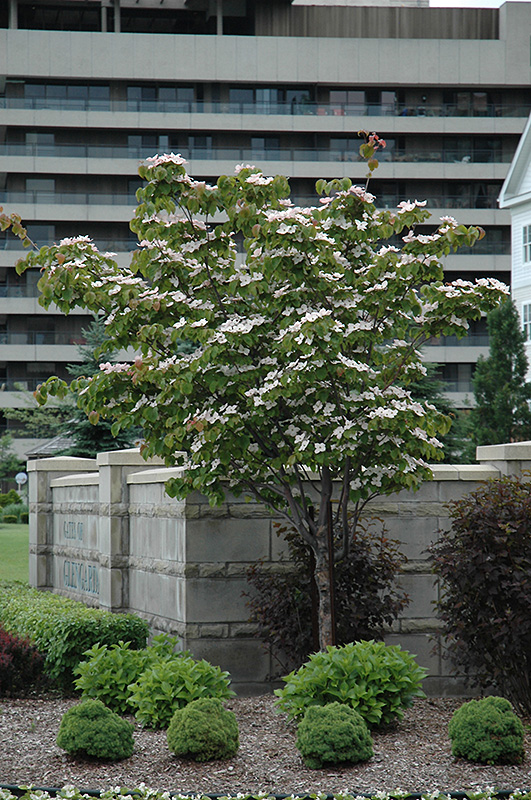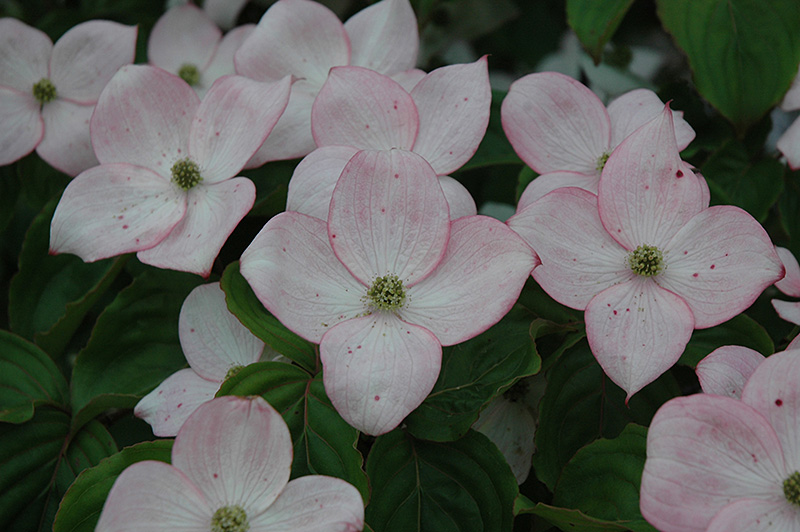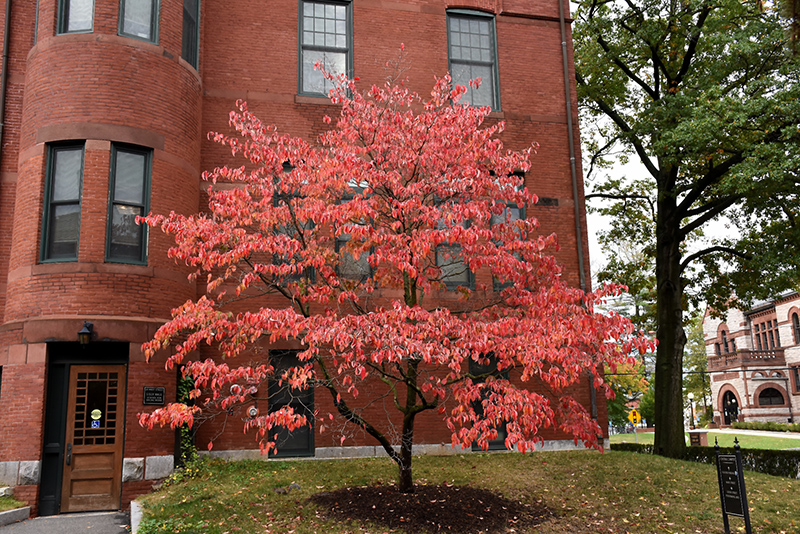Height: 25 feet
Spread: 30 feet
Sunlight:
![]()
![]()
Hardiness Zone: 5a
Description:
Ultimate small specimen tree, famous for its large yet delicate white blooms in spring and excellent wide-spreading form; extremely fussy, requires rich, well-drained acidic soil and adequate precipitation, best with some shelter; best pruning Jun-Jul
Ornamental Features
Flowering Dogwood features showy clusters of white flowers with white bracts held atop the branches in mid spring. It has forest green deciduous foliage which emerges burgundy in spring. The pointy leaves turn an outstanding brick red in the fall. It produces red berries from early to late fall. The warty gray bark adds an interesting dimension to the landscape.
Landscape Attributes
Flowering Dogwood is a multi-stemmed deciduous tree with a stunning habit of growth which features almost oriental horizontally-tiered branches. Its average texture blends into the landscape, but can be balanced by one or two finer or coarser trees or shrubs for an effective composition.
This is a relatively low maintenance tree, and should only be pruned after flowering to avoid removing any of the current season's flowers. It is a good choice for attracting birds to your yard. It has no significant negative characteristics.
Flowering Dogwood is recommended for the following landscape applications;
- Accent
- Shade
Planting & Growing
Flowering Dogwood will grow to be about 25 feet tall at maturity, with a spread of 30 feet. It has a low canopy with a typical clearance of 4 feet from the ground, and should not be planted underneath power lines. It grows at a slow rate, and under ideal conditions can be expected to live for approximately 30 years.
This tree does best in full sun to partial shade. It requires an evenly moist well-drained soil for optimal growth, but will die in standing water. It is particular about its soil conditions, with a strong preference for rich, acidic soils. It is quite intolerant of urban pollution, therefore inner city or urban streetside plantings are best avoided, and will benefit from being planted in a relatively sheltered location. Consider applying a thick mulch around the root zone in winter to protect it in exposed locations or colder microclimates. This species is native to parts of North America.




